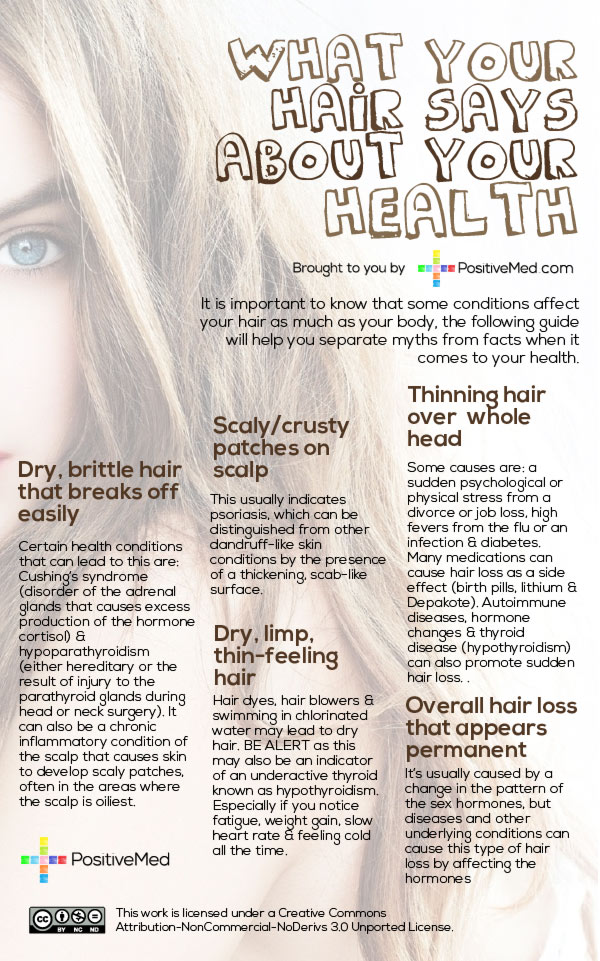It is important to know that some conditions affect your hair as much as your body, the following guide will help you separate myths from facts when it comes to your health.
- Dry, limp, thin-feeling hair
Hair dyes, hair blowers, and swimming in chlorinated water may lead to dry hair, but be alert because it may also, be an indicator of an underactive thyroid, known as hypothyroidism especially if you notice fatigue, weight gain, slow heart rate, and feeling cold all the time.
- Scaly or crusty patches on the scalp
This usually indicates psoriasis, which can be distinguished from other dandruff-like skin conditions by the presence of a thickening, scab-like surface
- Thinning hair over the whole head
There are many things that can cause this effect, such as a sudden psychological or physical stressor, like a divorce or job loss, or it can also mean a high fever from the flu or an infection and diabetes. There are many medications that can cause hair loss as side effect too, such as birth pills, lithium and Depakote. Autoimmune diseases can also promote sudden hair loss. Hormone changes and thyroid disease, especially hypothyroidism, are some of the most common causes of hair loss.
- Overall hair loss that appears permanent
It’s usually caused by a change in the pattern of the sex hormones, but diseases and other underlying conditions can cause this type of hair loss by affecting the hormones
- Dry, brittle hair that breaks off easily
Breakage is most frequently the result of hair becoming over-brittle from chemical processing or dyeing, but there are certain health conditions that also lead to brittle, fragile hair, such as: Cushing’s syndrome, a disorder of the adrenal glands that causes excess production of the hormone cortisol, and hypoparathyroidism, a condition that usually either hereditary or the result of injury to the parathyroid glands during head and neck surgery.
Yellowish flakes on the hair and scaly, itchy patches on the scalp
It could mean a chronic inflammatory condition of the scalp that causes skin to develop scaly patches, often in the areas where the scalp is oiliest. When the flaky skin loosens, it leaves the telltale “dandruff” flakes.













